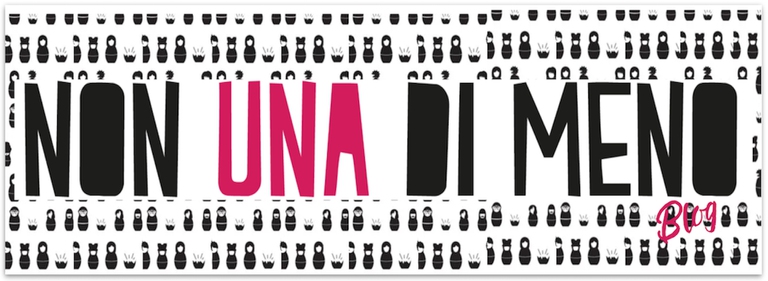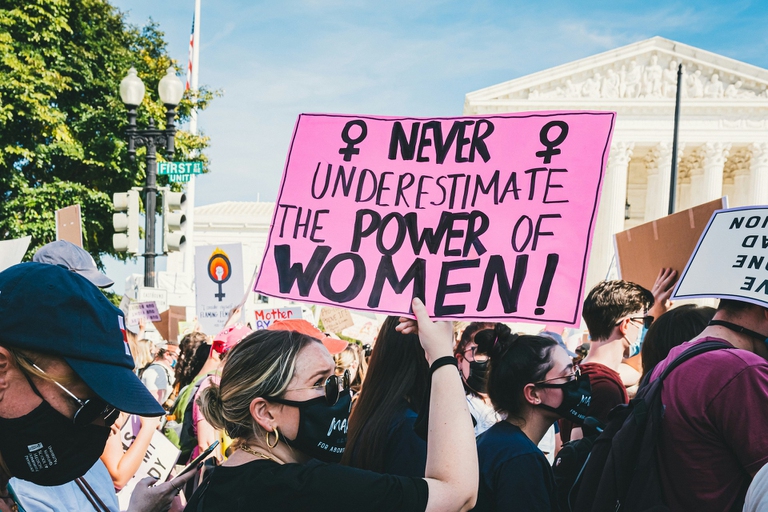https://www.lifegate.it/purplewashing-femminismo-marketing
- |
- We talk about purplewashing when companies boast feminist values for their convenience, without actually acting for gender equality.
- To date, the approach to gender issues is increasingly widespread but often denotes a certain superficiality.
We live in a historical moment of profound change:despite the equal pay between men and women is still a very distant achievement (analysts have estimated that it could happen in 250 years), the issues related to type and ai woman rights they are taking the stage in a rather important way compared to the past.This obviously does not bring with it factual changes, at least not always, but it has certainly contributed to introducing a topic into the political, social and media scene that until a few years ago was very under the radar.Here I am too purple and fuchsia colors, one traditionally paired with feminist struggles since the first movements of the twentieth century and the other adopted by the feminist and transfeminist movement Not one less, have become part of the media lexicon.With the risk of leading to purplewashing.
Purple and fuchsia, the colors of the feminist movement
The feminist struggle has often overlapped and intersected with the workers' struggle.Many historical sources trace the adoption of the color purple to an accident that occurred on March 25, 1911 in a New York textile factory, the Triangle Shirtwaist Company, in which 146 people died.For the most part they were immigrant women, employed by the factory for negligible salaries with working hours that reached 52 hours a week.Due to some dyes used by Triangle, the smoke that came out of the building was a deep purple:historians therefore trace the adoption of this color by feminist movements to that purple smoke.As for fuchsia, it is the color chosen by the feminist and transfeminist movement Not one less, founded in Argentina in 2015 and then expanded internationally.

Purplewashing as a marketing lever
Unlike the greenwashing he was born in rainbowwashing, when talking about purplewashing we are hardly referring to the color itself, generally little used to associate with feminist battles, but rather to the ability of brands to link themselves to the cause, not always in genuine way.Capitalism has in fact been able to welcome feminist, anti-racist or environmentalist discourses and incorporate them into its narrative.Because society loves inclusion, at least in words, it is easy for politicians, advertisers or other institutional leaders to use only some feminist values at their convenience.Marketers and politicians start campaigns or make speeches about feminism even when in reality their personal opinion or the actions of their companies or foundations are not so favorable to feminism. gender equality.
Companies and politicians often identify theinclusiveness as a marketable idea that can bring them an audience or votes.In fact, the term purplewashing refers to the appropriation and the exploitation of languages, symbols, themes and values of feminism and inclusiveness for corporate marketing purposes.Today this is a rather widespread practice, but this term was first used more than twenty years ago by the countryside Think before you pink with which the association Breast cancer action it denounced the enormous quantity of products advertised via the pink bow associated with the fight against breast cancer which did not correspond to a real donation from the brands.Over the years, the meaning has broadened to include all those more or less mendacious, more or less clumsy manifestations that use gender equality as a lever to promote themselves.

The approach to gender issues is often still superficial
“If on the one hand the interest and the desire to take an interest in the topic has increased, I feel that the approach is however quite superficial”, he argues Miriam Mastria, director of Semia – Women's Fund, the first Italian feminist fund to support organizations, groups, collectives and activists committed to making Italy a more inclusive, fair and safe country for girls, women, transgender and non-binary people.“Companies are getting closer and closer to feminist themes, but in most cases this word remains a taboo, we prefer to talk about women's rights and equality.There is more awareness and there is more will to understand, but at the same time culture and awareness are lacking.In many cases, large companies want to make donations, but then they are afraid of the right words.They think activism is too difficult a thing to deal with."
How has organizations' approach to gender issues changed over time?
Let's say that the approach is still very much based on looking at women's issues or women's rights from a safeguard and protection point of view.Companies and foundations are interested in raising awareness on the issue of violence against women – and this is good, because there is a need and because even compared to other countries we are far behind Istanbul Convention – but this creates a deviation from the issue of rights.Too often women are portrayed as someone exclusively to be protected and not as a political subject who needs to take her freedoms and rights and live them.In fact, it often happens that campaigns are not entrusted to people who deal with gender issues, but are written by communication agencies who perhaps have never dealt with the topic in their life and therefore the result is not always wonderful.It is also very clear that the desire for inclusiveness manifests itself more at certain times of the year and then does not correspond with the reality of the company, which perhaps does not have support policies for female workers.
How do you recognize coherent and sincere communication from a more opportunistic one?
Many Italian companies have introduced the gender equality certification system in recent years:that is, a check carried out by an external organization that carries out surveys to evaluate the company in terms of female employment and gender pay gap for example.Although it is difficult, especially for small companies, to have a gender equality certification that corresponds exactly to the reality of the organization.It happens that certification is obtained but then there is a discrepancy between the results and internal policies.
As regards NGOs and third sector entities, for example, before working with a company and carrying out initiatives fundraising, a process is first carried out due diligence.This process consists of screening the company, first of all to verify the origin of the company's profit and capital.Then we try to carry out a sort of assessment so that, if the company wants to support the issue of women's work, it is necessary to have HR policies that protect the rights of female workers and guarantee that they are the same as male workers.Or that, for example, there are internal policies that take care of the needs of women or LGBTQIA+ communities.In fact, many times we find discriminatory practices towards the community LGBT+, disabled women or marginalized communities such as racialized ones, for example.
The perspective in which these collaborations are carried out responds to the principle of share value:companies decide to donate and share a piece of their value with an NGO or a non-profit with a view to exchange but, in order for the charity not to be damaged by the operation, checks of this type are necessary.It often happens that, when there are large gaps in this sense on the part of companies, in response to a larger donation, training or tailor-made support is requested so that their policies can be in line with the donation operation. or collaboration.Because often the problem is upstream, that is, companies just don't know how to deal with certain issues or who to turn to in order to do things well.
